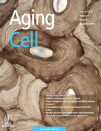Replication of an association of variation in the FOXO3A gene with human longevity using both case–control and longitudinal data
Summary
Genetic variation in FOXO3A has previously been associated with human longevity. Studies published so far have been case–control studies and hence vulnerable to bias introduced by cohort effects. In this study we extended the previous findings in the cohorts of oldest old Danes (the Danish 1905 cohort, N = 1089) and middle-aged Danes (N = 736), applying a longitudinal study design as well as the case–control study design. Fifteen SNPs were chosen in order to cover the known common variation in FOXO3A. Comparing SNP frequencies in the oldest old with middle-aged individuals, we found association (after correction for multiple testing) of eight SNPs; 4 (rs13217795, rs2764264, rs479744, and rs9400239) previously reported to be associated with longevity and four novel SNPs (rs12206094, rs13220810, rs7762395, and rs9486902 (corrected P-values 0.001–0.044). Moreover, we found association of the haplotypes TAC and CAC of rs9486902, rs10499051, and rs12206094 (corrected P-values: 0.01–0.03) with longevity. Finally, we here present data applying a longitudinal study design; when using follow-up survival data on the oldest old in a longitudinal analysis, we found no SNPs to remain significant after the correction for multiple testing (Bonferroni correction). Hence, our results support and extent the proposed role of FOXO3A as a candidate longevity gene for survival from younger ages to old age, yet not during old age.




